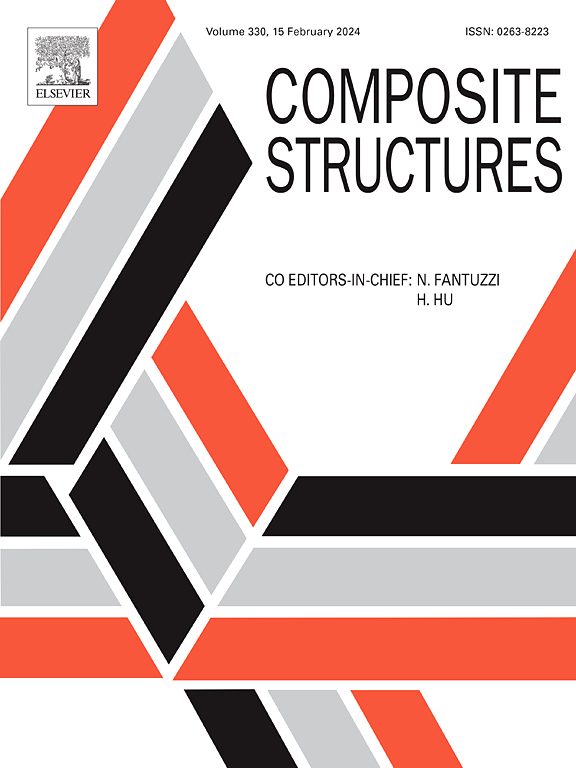Flexural frequency analysis of damaged beams using mixture unified gradient elasticity theory
IF 6.3
2区 材料科学
Q1 MATERIALS SCIENCE, COMPOSITES
引用次数: 0
Abstract
The flexural vibration of miniaturized homogeneous isotropic beams with multiple cracks is investigated using the mixture unified gradient elasticity theory. The model captures both possible stiffening and softening size-dependence at small scales. The problem is addressed using the Bernoulli-Euler beam theory, with the domain partitioned into distinct sections at cracked cross-sections. Cracks are assumed to be non-propagating, sufficiently spaced to avoid interaction, and open during vibration. The elastic spring model is employed to capture the effect of cracks on the dynamic characteristics. The time-dependent variational functional is rigorously established to derive variationally consistent and extra non-standard boundary and continuity conditions. Natural frequencies are obtained by solving the eigenvalue problem resulting from the imposition of boundary and continuity conditions. The predictions demonstrate excellent agreement with experimental, molecular dynamics, and analytical data from the literature for both large- and small-scale beams. The model is applied to examine the effects of gradient characteristic parameters, crack length and location, and boundary conditions on the frequencies. The practical application of the model to the inverse problem, where the location and length of a crack are unknown a priori, is numerically analyzed. The results indicate that the size effect significantly influences the inverse problem solution.
求助全文
约1分钟内获得全文
求助全文
来源期刊

Composite Structures
工程技术-材料科学:复合
CiteScore
12.00
自引率
12.70%
发文量
1246
审稿时长
78 days
期刊介绍:
The past few decades have seen outstanding advances in the use of composite materials in structural applications. There can be little doubt that, within engineering circles, composites have revolutionised traditional design concepts and made possible an unparalleled range of new and exciting possibilities as viable materials for construction. Composite Structures, an International Journal, disseminates knowledge between users, manufacturers, designers and researchers involved in structures or structural components manufactured using composite materials.
The journal publishes papers which contribute to knowledge in the use of composite materials in engineering structures. Papers deal with design, research and development studies, experimental investigations, theoretical analysis and fabrication techniques relevant to the application of composites in load-bearing components for assemblies, ranging from individual components such as plates and shells to complete composite structures.
 求助内容:
求助内容: 应助结果提醒方式:
应助结果提醒方式:


